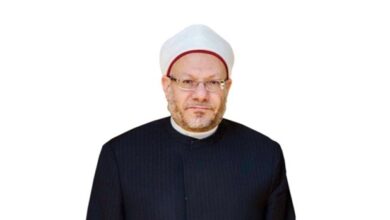This is the third part of an investigative series exploring the question of Islamic radicalism on British campuses. The first and second installments looked at the lives and thought of some Muslim students, and separately explored the profiles of those who have turned to radicalism and terrorism.
London–A 2005 report entitled, “When Students turn to Terror: Terrorist and Extremist Activity on British Campuses” by Anthony Glees, director of Brunel University’s Center for Security and Intelligence Studies, and Chris Pope, a former student of Glees, attempted to create a connection between some 48 universities, including City University, and terrorism, based on the fact that terrorists studied there.
The report didn’t limit itself to Islamists, but looked at terrorism in general. For example, it listed British National Party (BNP) leader Nick Griffin in its list of students who turned to terror.
The National Union of Students in Britain, however, was one of the first to criticize the report. Its president told the press shortly after the report was published that “no evidence is presented to support the view that campus life contributes to [British Muslim] students becoming involved in terrorism, other than that some individuals who have been, or are alleged to have been, involved in terrorist activity also attended a UK college at some point.”
The report also proposed radical solutions to the terrorism problem, including restricting the number of students from ethnic minorities attending each university, particularly black students, through a system of “quotas”–a notion that contributed to the report’s unpopularity. The report’s publisher, The Social Affairs Unit, was described as “a right-wing think-tank” by The Times newspaper, while the report itself was widely discredited for lacking evidence and failing to provide a clear picture of the inner workings of the terror recruitment machine.
Studies looking at the questions of what books student members read, what ideas they are exposed to, why some become extreme, and, finally, why others escape the clutches of Islamism are scarce or extremely unpopular.
So far, no comprehensive study of the general phenomenon of radicalization was able to conclude whether or not there is a list of ingredients that lead to someone becoming a terrorist or a violent extremist, and analysts in the UK haven’t agreed on whether or not there’s a pattern to how students are recruited into terrorist groups at such a young age.
Issues of how recruitment works on campus, “profiles” of terrorists, and whether or not there is a “tipping point” for terrorism remain as mysterious as ever–more so for university students. It’s murky, and no one knows exactly how it works, said Jeremy Binnie, analyst at Jane’s Terrorism and Insurgency Center, an international intelligence and information provider.
Anecdotal evidence from ex-Islamists Shiraz Maher, Ed Husain and Omar Sheikh, whose stories are recounted in the previous installment (link to Part II) of this series, however, suggests that there may be a prototype for those “who cross into the dark side.”
Most of them are young Muslims who were well-educated but who also cared fervently about their Muslim community, which is why they joined Islamic societies in the first place.
Most of them said they had felt that Muslims were being persecuted or discriminated against–a feeling still shared by many young students today. For instance, Sheikh’s conversion to radical Islam began after he participated in “Bosnia Week” in 1992, following a brutal civil war in which thousands of Bosnian Muslims were slain.
Sheikh had also reported being taunted in the playground and being called a “Paki bastard” in school. Peter Gee, a fellow inmate who spent more than a year in prison with Sheikh, told Sageman, “Omar had admitted to him that he had been radicalized because of bullying he was subjected to during his East London childhood.”
Many of the Muslims who turned to radicalism were also exposed to images, whether through media or at Muslim events, which frequently showed Muslims being incarcerated, killed or injured, and which had left them feeling angry and helpless.
Muslims in Britain are often exposed, for example, to imagery of Muslim suffering in the Israeli-occupied Palestinian territories and in US-occupied Iraq. Muslim students said that, besides Western media, they often turned to the Internet and to Arab networks, such as Al-Jazeera, and Islamic satellite channels, such as Islam Channel, to get a more balanced picture of the news in conflict areas. As a result, they are often exposed to much more graphic accounts of what’s happening to fellow Muslims across the world.
But like the Holocaust is for the Jewish people, events like the longstanding Israeli-Palestinian conflict and the ongoing wars in Iraq and Afghanistan linger in the psyche of these young Muslims and become part of their collective identity. Such events can be manipulated to mobilize Muslims, especially the more zealous among them.
Maryam, the City ISOC head sister, said that all this can make some students vulnerable to violent ideologies. “Think about it,” she said. “When you see the media, you see Afghanistan, you see Muslims getting killed in Palestine and Iraq… A lot of Muslims come back to the religion through what’s happening there. In one sense, it’s good, they’re learning about their religion, about their brothers and sisters. But it’s a double-edged sword. That could be what leads to them turning completely the other way.”
The next installment of this series will focus on City University’s Islamic Society, a controversial hub for conservative Muslim students in London.




